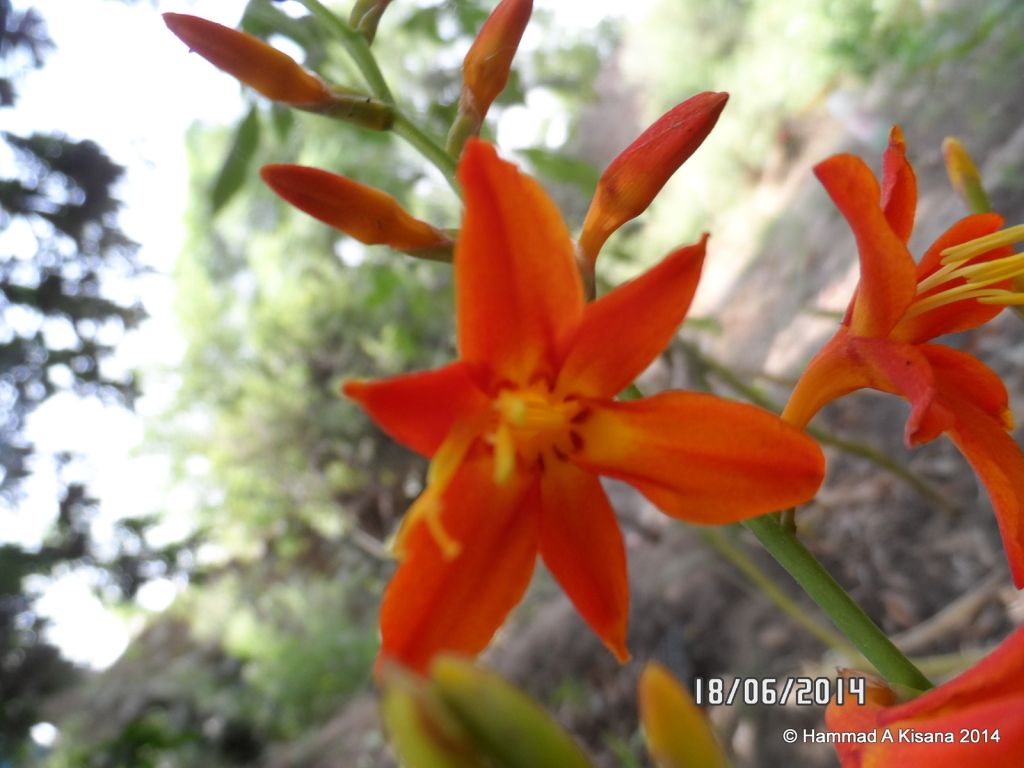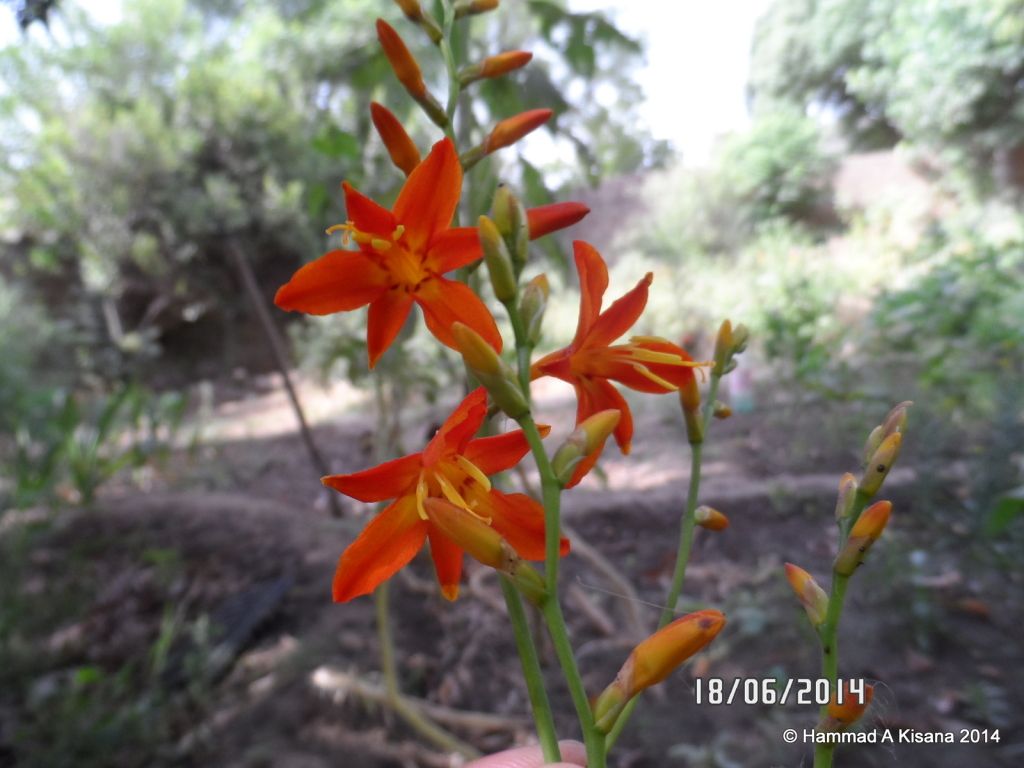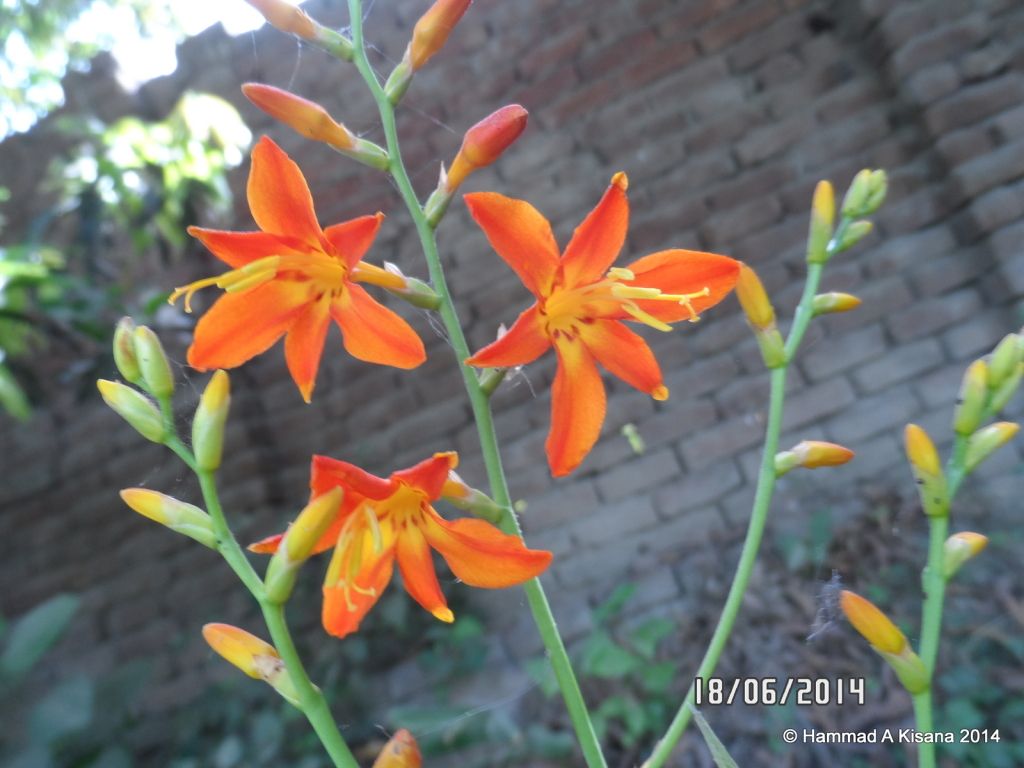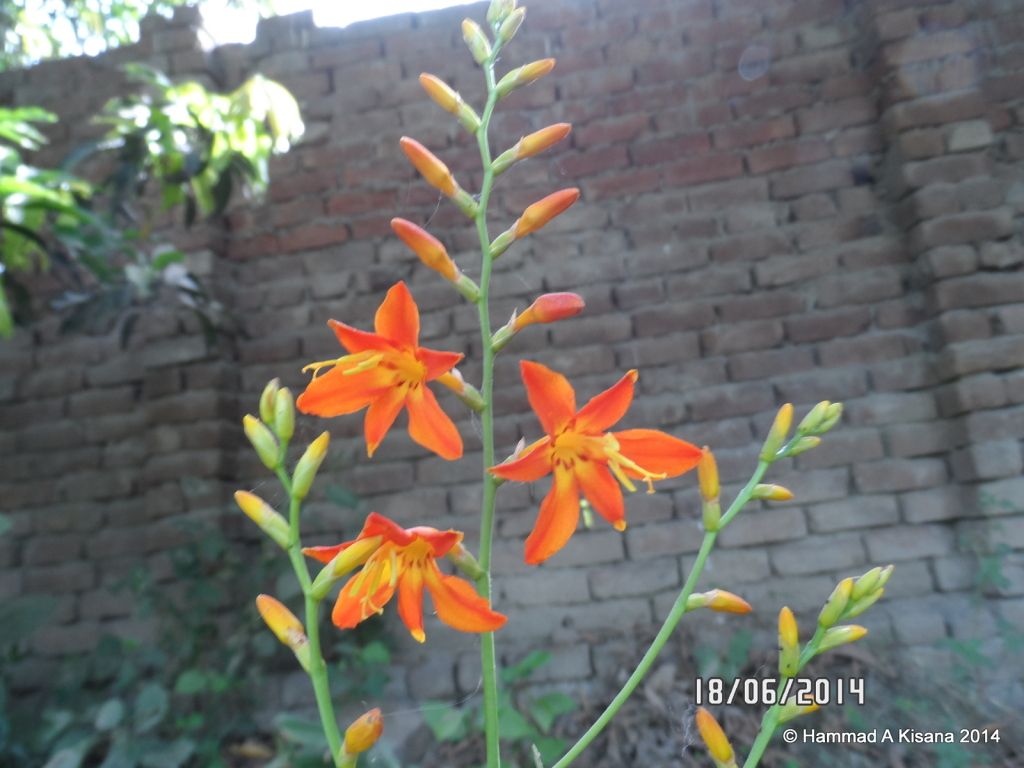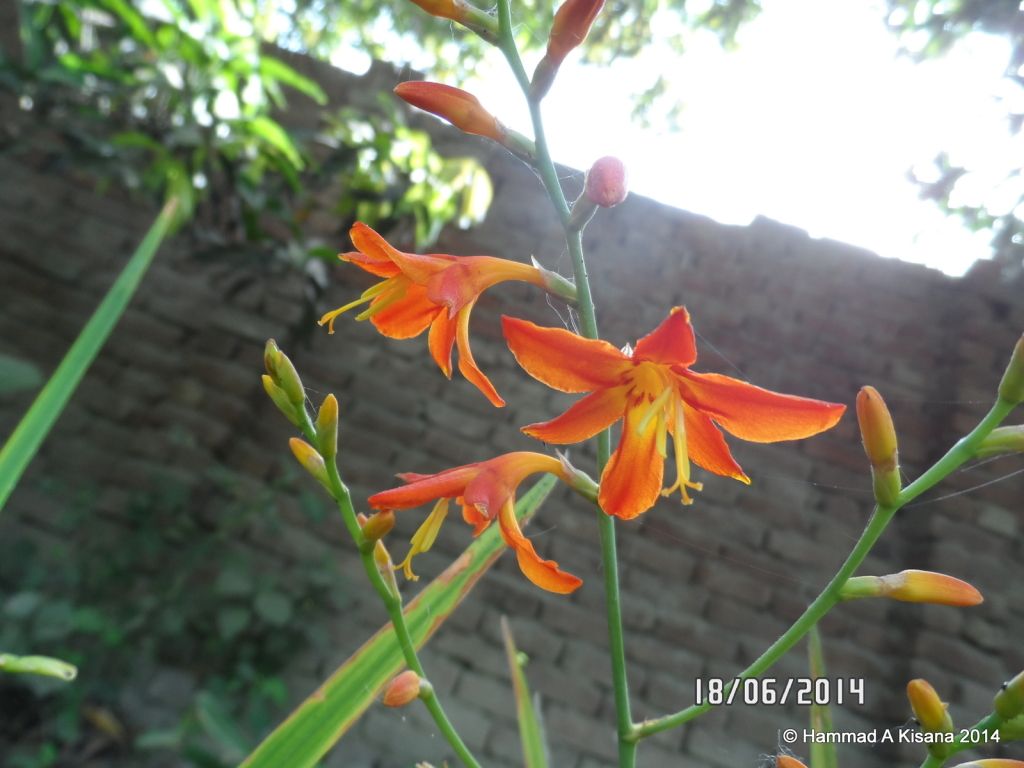Crocosmia
Posted: September 5th, 2013, 2:37 pm
| Botanical Name | Crocosmia |
| Family | Iridaceae |
| Genus | Crocosmia |
| Specie | 13 Species are available |
| Local Name in Urdu | N/A |
| Common Name | Coppertip, Falling Stars |
| Life Cycle | Perennial |
| Cultivar Name | Around 400 Cultivars are available |
| Category(Bulb/Corm/Tuber/Rhizome/root) | Corm |
| Hardiness | Frost Hardy (corm get damage at -2) |
| Hardiness zone | 06 to 10 |
| Soil PH | Tolerant |
| Planting Time | Early Spring |
| Planting Depth | 03 to 04 Inches (7.5cm to 10cm) |
| Spacing | 02 to 04 Inches (like to grow in clumps) |
| Height | 24 to 40 Inches (60cm to 100cm) |
| Exposure | Full sun to partial shade (am sun recommended) |
| Flowering Time | Summer to Fall |
| Flower Colour | Red and Yellow |
| Fragrant | Not strong fragrant but has odour |
| Uses | Perform better in flowering beds and borders |
| Propagation | A clump can usually be left undivided as the new corm forms above last year’s to produce a vertical chain of corms. This system ensures vigor is maintained from year to year as the old corms rot they feed the plant. If you do divide, do it in spring just as growth restarts |
| Difficulty(Easy/Intermediate/Hard ) | Easy to Intermediate |
| Suitable for (KHI/LHR/RWL/ISL/PWR/High Lands) | All Areas |
| Tips to grow | Most crocosmias thrive once planted in a sunny position and they form a tight clump and produce a lot of flowers. But their habit varies greatly according to cultivar and your location. In warmer areas crocosmias tend to grow larger. But if space is limited plant a smaller crocosmia - as some of the taller ones need lots of space |
| Other Details | Crocosmias provide branching heads of bright, sunny flowers and strong sword-shaped leaves so they provide structure and colour in the sunny border. There are hundreds on offer. But they vary in flowering times, flower colour and stature. They are all bred from South African species but despite this almost all of them are hardy and reliable in the garden - happily coming back year after year. The darker-leaved varieties tend to be less hardy however. |

